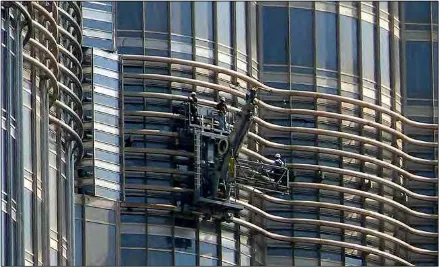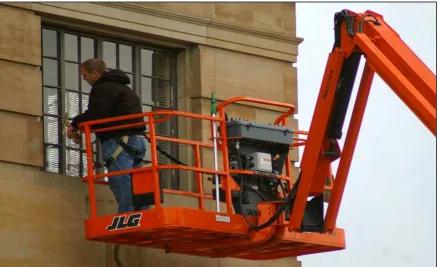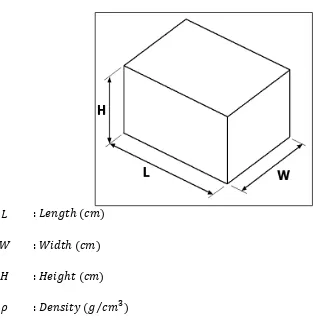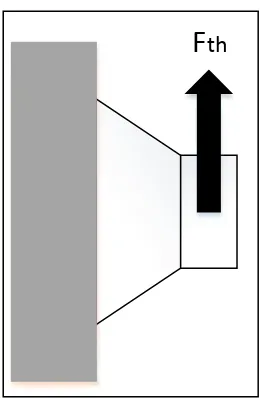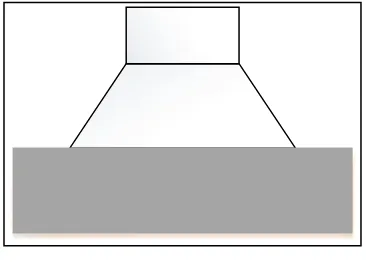FACULTY OF ELECTRICAL ENGINEERING UNIVERSITI TEKNIKAL MALAYSIA MELAKA
FINAL YEAR PROJECT REPORT
BEKU 4894
DESIGN AND DEVELOPMENT OF AN AUTOMATED WINDOW CLIMBING ROBOT
AHMAD FAHIM BIN MUSTAFA
Bachelor of Mechatronics Engineering
ii
“I hereby declare read through this report entitle “Design and Development of An Automated Window Climbing Robot” and found that it has comply the partial fulfillment for awarding the degree of Bachelor of Mechatronic Engineering”
Signature : ………
Supervisor’s Name : DR. MUHAMMAD FAHMI BIN MISKON
iii
DESIGN AND DEVELOPMENT OF AN AUTOMATED WINDOW CLIMBING ROBOT
AHMAD FAHIM BIN MUSTAFA
A report submitted in partial fulfillment of the requirements for the degree of Bachelor of Mechatronic Engineering
Faculty of Electrical Engineering
UNIVERSITI TEKNIKAL MALAYSIA MELAKA
iv
“I hereby declare read through this report entitle “Design and Development of An Automated Window Climbing Robot” and found that it has comply the partial fulfillment for awarding the degree of Bachelor of Mechatronic Engineering”
Signature : ………
Name : AHMAD FAHIM BIN MUSTAFA
v
ACKNOWLEDGEMENT
All praises to ALLAH S.W.T. the Almighty God that has given me the strength, ideas and many other things upon this final year project. A very greet to our Prophet Muhammad S.A.W., his family and friends. Your blessing gives me an opportunity and some ideas to complete my final year project.
I would like to convey my thankfulness to my supervisor, DR. Muhammad Fahmi B. Miskon and my previous supervisor ENGR. Mohd Rusdy B. Yaacob for guidance throughout the progress of this project, for his nascent ideas, valuable guidance and continuous encouragement. This project report would not be possible completed without their guidance. I appreciate their countless hours spent in sharing their understanding, knowledge and experience throughout in this project.
vi
ABSTRACT
vii
ABSTRAK
viii
TABLE OF CONTENT
CHAPTER TITLE PAGE
ACKNOWLEDGEMENT v
ABSTRACT vi
TABLE OF CONTENTS viii
LIST OF TABLES xi
LIST OF FIGURES xii
LIST OF ABBREVIATION xiv
1 INTRODUCTION 1
1.0 Overview 1
1.1 Research Background 1
1.2 Motivation 4
1.3 Problem Statement 5
1.4 Objective 6
1.5 Scope of research 6
2 LITERATURE REVIEW 7
2.0 Overview 7
2.1 Project Background 7
2.1.1 Mass of the prototype 7
2.1.2 Theoretical Holding Force 8
2.1.3 Suction Cup Diameter 10
2.1.4 Force act on Suction Cup 11
2.2 Literature Review 13
2.2.1 Holding Mechanism 13
2.2.1.1 Vacuum Suction Mechanism 13 2.2.1.2 Magnetic Attractive Force
Mechanism 16
ix
2.2.2.1 Two Drive Wheels Mechanism 18
2.2.2.2 Walking Mechanism 19
2.2.2.3 Rigging Mechanism 20
2.2.2.4 Desired Path 21
2.2.3 Performance of the Actuator 23
2.2.3.1 DC Geared Servo Motor 23
2.2.3.2 Pneumatic Cylinder 24
2.3 Comparison of previous robot 26
2.3.1 Holding Mechanism 27
2.3.2 Locomotion Mechanism 28
2.3.3 Mass and Dimension 28
2.3.4 Desired Path and Main Actuator 29
2.4 Conclusion 29
3 METHODOLOGY 30
3.0 Overview 30
3.1 Window Climbing Robot System 30
3.1.1 Working Mechanism 30
3.1.2 Electro-Pneumatic system 34
3.1.3 Electrical System 37
3.2 Experiment and Data Collection 38
3.2.1 Festo FluidSim Software 38
3.2.2 Experiment on different pressure and time take
to complete path 39
3.2.3 Safety Precaution and Accuracy 41
3.3 Conclusion 42
4 RESULT AND ANALYSIS 43
4.0 Overview 43
4.1 Result and Analysis Data 43
4.1.1 Calculation 43
4.1.1.1 Mass of the Prototype 44
4.1.1.2 Theoretical Holding Force 44
4.1.1.3 Suction Cup Diameter 47
x
4.1.2 Festo FluidSim Simulation 49
4.1.3 Experiment on Different Pressure and Time
taken to complete Path 54
5 CONCLUSION 57
5.0 Conclusion 57
5.1 Recommendation 58
REFERENCES 59
APPENDICES 61
Appendix A 61
Appendix B 62
xi
LIST OF TABLES
TABLE TITLE PAGE
2.1 Diameter of suction cup 11
2.2 Components of window cleaning robot 14
2.3 Specification for Windoro inner unit 16
2.4 Specification for Windoro outer unit 17
2.5 Specification of the robot 23
2.6 Comparison between previous robots 26
3.1 Working mechanism and description 32
4.1 Result of different mass with pressure 63
4.2 Result on different mass and theoretical holding force 63 4.3 Result between different friction value and theoretical
holding force
64
4.4 Result of different pressure with velocity of double acting cylinder
64
4.5 Result of different pressure, distance complete and time taken
64
4.6 Result of final pressure, distance complete, time taken and velocity
xii
LIST OF FIGURES
FIGURE TITLE PAGE
1.1 Workers complete their task using Bosun’s chair 2
1.2 Worker cleaning the window using Bosun’s chair 2
1.3 Cleaning workers are using platform to complete their task 3
1.4 Workers using crane for their job 4
2.1 Dimension of the prototype 8
2.2 Lifting force on the suction cup 9
2.3 Suction cup 10
2.4 Forces acting on suction cup 12
2.5 Window cleaning robot 14
2.6 Basic structure of window cleaning robot 15
2.7 Windoro inner unit 16
2.8 Windoro outer unit 17
2.9 Bottom view of Window Cleaning Robot 19
2.10 Forward movement of the Window Cleaning Robot 20
2.11 Schematic representation of rigging along with the robot 21
2.12 Desired path for window cleaning 22
2.13 Sky Cleaner 1 24
2.14 Sky Cleaner 2 25
3.1 Prototype Window Climbing Robot (Top View) 31
3.2 Prototype Window Climbing Robot (Side View) 31
3.3 Working mechanism of the Window Climbing Robot 32
3.4 Flow chart operation of the Window Climbing Robot 33
3.5 Vacuum suction flow diagram 34
3.6 Electro-pneumatic circuit diagram in FluidSim 35
xiii
3.8 Double acting cylinder fully extend 36
3.9 Simulation in Festo FluidSim 38
3.10 Path of the prototype 40
3.11 Side view of prototype in initial position 40
3.12 Top view of prototype in initial position 41
4.1 Theoretical holding force and mass of robot 45
4.2 Friction values with theoretical holding force 46
4.3 Pressure with mass of robot 48
4.4 Timing diagram for � 49
4.5 Timing diagram for � 49
4.6 Timing diagram for � 50
4.7 Timing diagram for � 50
4.8 Timing diagram for � 51
4.9 Timing diagram for � 51
4.10 Timing diagram for � 52
4.11 Pressure versus velocity of cylinder 53
xiv
LIST OF ABBREVIATIONS
WCR Window Climbing Robot
AC Alternating Current
DC Direct Current
1
CHAPTER 1
INTRODUCTION
1.0 Overview
In this chapter, there are sub-sections which will explain more details about the research background, motivation, problem statement, objectives, and scope of research. Those explanations will provide overall understanding for audience regarding the project that researcher design and develop. Furthermore, this research may be useful in the future after few modification and improvement.
1.1 Research Background
2
Figure 1.1: Workers complete their task using Bosun’s chair
Figure 1.2: Worker cleaning the window using Bosun’s chair
3
skyscrapers. The platforms are carrying the workers and their cleaning equipment to complete their cleaning task. This method is applied as shown as figure 1.3.
Figure 1.3: Cleaning workers are using platform to complete their task
4
Figure 1.4: Workers using crane for their job
1.2 Motivation
By year 2014, there are many tall building have been built as the increscent of population. Most tall building can be seen in Hong Kong, Dubai, Taiwan and even Malaysia. Tall building usually comes up with some problem where a worker needs to risk their life for cleaning the building’s window. Media reported many accidents happen to window cleaning workers and some of them faced death or disable for the rest their life. In January, 5 2008, Alcides Moreno, 37, fell almost . from the roof of a Manhattan skyscraper [1]. BBC News reported in April 22 1998, two window cleaners were killed when the cradle they were working in plunged . to the ground [2].
5
1.3 Problem Statement
There are several types of design of the robot that are need to analyze based on their performance in holding mechanism and locomotion mechanism. The design are mobile robot, walking robot and the rigging robot. Each of the design have their own performance in holding mechanism and locomotion mechanism based on mass of the robot, velocity of the robot moving on the window surface and the complexity of the holding mechanism.
Firstly, the most problem that occurred in developing a wall climbing robot is difficult for the robot to overcome the gravitational force exerted towards the earth. The key problem with this explanation is the mass of the robot. The mass of the robot will affect the gravitational force. When the mass of the robot increase, the gravitational force exerted on the robot also increase. So, a lightweight robot is suggest to overcome this problem. The window climbing robot design must have at least two separately part, first window cleaner and second is control system.
Secondly, the velocity of the robot is one of the major problem in designing the robot. Each of the design have their own performance on the velocity. For the mobile robot, the velocity is good but it have complex mechanism. For the walking robot, the velocity is fair, not as good as mobile robot and it have fair complex mechanism. For the rigging type robot, the velocity of the robot is fair but the robot is not handy and easy to operate because it have different mechanism to hanging the robot on the window surface.
Another problem happen is the robot tends to fall down when about to move if the suction and locomotion mechanism is not well synchronized. A suitable pneumatic system is design to hold the robot on the window surface. Number of suction cups also must take in account because it will increase the mass of robot.
6
1.4 Objectives
Based on the problem statement stated above, the objectives of this project are:
i) To design window climbing robot using double acting pneumatic cylinder with the vacuum suction mechanism.
ii) To design and develop the desired path for the prototype which can hold and move on window glass surface.
iii) To analyze performance of the robot in term of velocity of prototype, the theoretical holding force of robot and vacuum suction pressure required.
1.5 Scope of Research
7
CHAPTER 2
PROJECT BACKGROUND AND LITERATURE REVIEW
2.0 Overview
This chapter consists of fundamental theories based on the characteristic of window climbing robot that are mention in chapter 1. Besides that, comparison between design, locomotion mechanism and holding mechanism of the robot based on the previous research are in the literature review.
2.1 Project Background
This subsection is the project background of this project. There are 3 part of fundamental theories that is major problem and must be take into account when develop the prototype of window climbing robot.
2.1.1 Mass of the prototype
The mass of the prototype can be calculated based on the equation (2.1). The mass of prototype must include all the component on the prototype.
= × × � × (2.1)
Where
8
: ℎ
: � ℎ
� : � � ℎ
: � ⁄
Figure 2.1: Dimension of the prototype
2.1.2 Theoretical Holding Forces
The holding force of the suction cups surges relatively with the difference between the environmental weight and the weight inside the cup. This implies the holding force is corresponding to the weight distinction and the suction space. Greater the contrast between climatic weight and weight in the suction cup, the more the possessions force. The force can contrast contingent upon a change of the weight distinction and region limits.
9
Figure 2.2: Lifting force on the suction cup
�ℎ = � × + × (2.2)
Where
�ℎ : ℎ � � ℎ � N)
:
: � � � . ⁄
: � � ⁄ � ℎ � �
� : � � � �
: � : .
10
2.1.3 Suction Cup Diameter
Suction cups are utilized to hold and move robot on the window surface. The climatic weight presses the suction cup against the window surface when the air weight is greater than the weight between the suction cup and the window surface. This weight fluctuation is come to by connecting the suction cup to a compressor, which discharges the air from the space between the cups and the window surface. In the event that the suction cup is in association with the surface of the window, outside air can't enter it from the sides and a vacuum is created.
Figure 2.3: Suction cup

